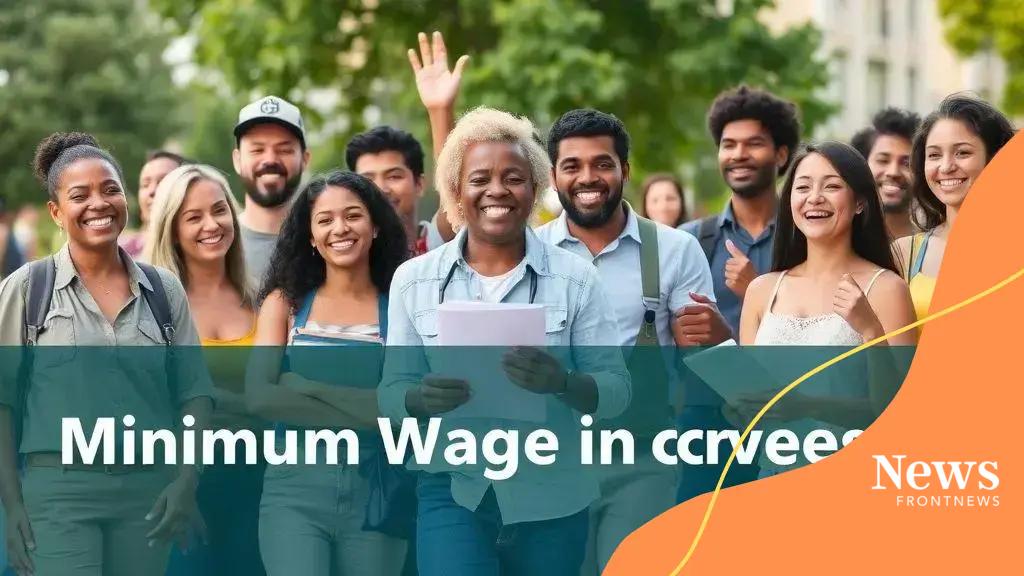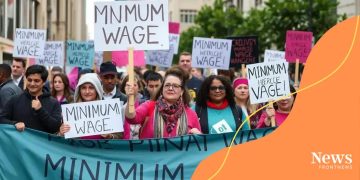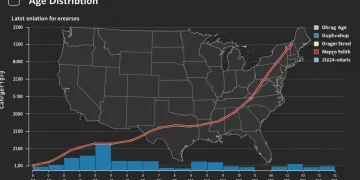Minimum wage debate: Understanding its real impact

The minimum wage debate involves increasing wages to reduce poverty and improve living standards, but it also raises concerns about potential job losses and varying impacts across different regions.
The minimum wage debate raises important questions about fairness and economic sustainability. How does it affect workers, businesses, and the economy as a whole? Let’s delve into this complex issue and its far-reaching implications.
Historical context of minimum wage policies
The historical context of minimum wage policies is essential to understand why these laws exist today. Minimum wage laws were first introduced to protect workers from exploitation, ensuring a basic standard of living. Over the years, several pivotal events shaped their development.
Early Beginnings
In the early 20th century, many countries, including the United States, began to see the need for fair labor practices. The Great Depression amplified the urgency for minimum wage laws as unemployment soared and workers struggled.
Key Legislation
The Fair Labor Standards Act (FLSA) of 1938 was a significant milestone in the U.S. It established a national minimum wage, initially set at 25 cents an hour. This law aimed not only to support workers but also to stimulate the economy.
- Forces of supply and demand impacted wages.
- Labor unions played a crucial role in advocating higher wages.
- Minimum wage has changed multiple times over the decades.
- Different states began to set their own minimum wages sooner than others.
Over time, other important legislation and societal changes affected the minimum wage landscape. The civil rights movement brought attention to wage disparities among different demographic groups, pushing for inclusivity in salaries. Moreover, economic fluctuations have led to ongoing debates about adjusting the minimum wage to meet current living costs.
Current Trends
In present times, the minimum wage debate continues, highlighting regional variances and the varying needs of the workforce. Many advocate for raising the minimum wage to reflect inflation and living expenses, while others argue about potential job impacts.
Overall, understanding the historical context of these policies allows us to engage in informed discussions about their future. The evolution of minimum wage laws illustrates the ongoing struggle for worker’s rights and fair compensation.
Economic effects of raising the minimum wage
The economic effects of raising the minimum wage can significantly influence both workers and businesses. Understanding these effects helps us see the broader picture of how wage policies impact the economy.
Positive Impacts
One of the primary benefits of increasing the minimum wage is that it provides more income for workers. With higher wages, employees are better able to afford basic necessities, such as food and housing. This boost in purchasing power can lead to increased consumer spending, which is vital for economic growth.
Potential Job Consequences
However, there are concerns about potential job loss. Some businesses may struggle to pay higher wages, which could lead to layoffs or hiring freezes. Smaller companies often feel this impact the most. They may have to adjust their budgets or even reduce their workforce to cope with increased labor costs.
- Studies show mixed results on job loss rates.
- Industries like retail and hospitality may feel greater pressure.
- Automation could increase as businesses seek to cut costs.
- Large corporations may adapt more easily compared to small businesses.
Another effect to consider is how raising the minimum wage can lead to inflation. As businesses face higher wage bills, they may raise prices on goods and services to maintain their profit margins. This could affect consumers, especially those on fixed incomes, who may struggle with rising costs.
Additionally, the increased minimum wage can narrow income inequality. Higher wages can help lift lower-income workers into a more sustainable economic position, reducing the wealth gap. This shift can have long-term benefits for society by improving overall economic stability.
In summary, while there are benefits to raising the minimum wage, it is crucial to consider the potential **economic effects** on businesses and the overall market. Balancing these factors can help create a fair and thriving economic environment for all.
Minimum wage and poverty reduction strategies

The connection between minimum wage and poverty reduction is a critical topic in economic discussions. Raising the minimum wage is seen by many as a direct way to help those living in poverty. As wages increase, so does the ability of workers to afford basic necessities.
Impact on Low-Income Families
When the minimum wage rises, low-income families benefit significantly. They are able to afford healthier food, better housing, and essential services. Increased earnings can reduce reliance on government assistance programs, empowering families towards self-sufficiency.
Broader Economic Benefits
Moreover, higher wages can stimulate local economies. As families have more disposable income, they tend to spend more in their communities. This economic activity can lead to more jobs and increased revenues for local businesses.
- Higher wages can decrease poverty rates.
- Businesses may see increased productivity as workers are more motivated.
- Reduced healthcare costs can result from improved living conditions.
- Access to education can improve as families invest in their children’s future.
Additionally, studies have shown that raising the minimum wage often leads to a healthier workforce. When people can afford adequate nutrition and healthcare, their overall well-being improves. This health improvement not only benefits individuals but also contributes to a stronger economy.
It’s important to consider the balance between raising the minimum wage and its potential effects on employment. Policymakers need to analyze how these changes can be implemented to ensure they benefit as many people as possible. The aim should be to create effective poverty reduction strategies that promote a thriving workforce.
Regional differences in minimum wage impact
The regional differences in minimum wage impact can vary greatly across the country. Each area has its unique economic conditions, which shape how minimum wage laws affect workers and businesses.
Cost of Living Variations
One major factor is the cost of living in different regions. Areas with high living costs, like New York or San Francisco, require higher wages for workers to afford basic needs. Conversely, in places with lower living costs, like rural areas, even a smaller minimum wage can feel more sufficient.
Economic Conditions
The local economic environment also plays a significant role in how minimum wage increases impact employment. In booming economies, businesses may easily absorb the cost of higher wages. However, in struggling regions, an increase in minimum wage might lead some employers to cut hours or jobs.
- Urban areas often see faster wage increases compared to rural areas.
- Industries vary significantly in their ability to adjust to wage changes.
- Minimum wage impacts can lead to migration from low-wage to high-wage regions.
- Worker demographics change regions to seek better opportunities.
Additionally, different states have the authority to set their own minimum wages, which leads to disparities. States like California and Massachusetts have higher minimum wages compared to states like Mississippi or Alabama. This inconsistency can create tensions as workers in lower-wage states may feel pressured to advocate for higher pay.
Understanding these regional differences is essential for creating fair labor policies. Policymakers need to consider local economies when setting minimum wage laws to ensure they support workers without harming job growth.
Future of minimum wage legislation
The future of minimum wage legislation is a hot topic that brings together various viewpoints. As economies evolve and the cost of living changes, the discussion around what constitutes a fair minimum wage is ongoing.
Potential Increases
Many advocates are pushing for higher minimum wages in light of rising living costs. With inflation and housing prices on the rise, there is a strong argument for regular adjustments to the minimum wage. This could help ensure that workers can meet their basic needs.
Legislative Challenges
However, the path to implementing these changes is often filled with challenges. Different states have varying economic conditions. Some lawmakers may fear that raising the minimum wage could lead to job losses, especially in smaller businesses. The discussion must balance economic growth with workers’ rights.
- Proposals for automatic increases based on inflation are gaining traction.
- Public support for higher wages is increasing among younger generations.
- Research continues to examine the effects of wage increases on employment rates.
- Collaborative approaches may emerge to find common ground among stakeholders.
As we look forward, it’s likely that the conversation around the minimum wage will continue to change. New laws may be proposed, and communities will advocate for what they believe is fair compensation for work. The broader economic landscape will also dictate how effective these changes can be.
Ultimately, the future of minimum wage legislation will require feedback from both workers and businesses to develop policies that are equitable and sustainable. Navigating this complex issue will be essential for promoting prosperity and fairness in the workforce.
In conclusion, the minimum wage debate is complex and multifaceted. As we’ve explored, raising the minimum wage can significantly impact individuals, families, and the economy. It’s essential to consider the historical context, economic effects, and regional differences in order to create effective policies. Advocates for higher wages emphasize that they can reduce poverty and improve living standards. However, concerns about job losses and inflation cannot be overlooked. Looking ahead, ongoing discussions will shape the future of minimum wage legislation. Everyone’s input, from workers to policymakers, is essential in creating a fair and sustainable wage system that meets the needs of all.
FAQ – Frequently Asked Questions about the Minimum Wage Debate
What is the purpose of raising the minimum wage?
Raising the minimum wage aims to provide workers with a living wage, reduce poverty, and increase consumer spending.
How do regional differences affect minimum wage legislation?
Regional differences affect minimum wage legislation as the cost of living and economic conditions vary across states and cities, leading to differing needs.
What are some potential downsides of increasing the minimum wage?
Potential downsides include the risk of job losses as businesses may cut positions or hours to manage increased labor costs.
How can communities have an impact on minimum wage policies?
Communities can influence minimum wage policies by advocating for changes, participating in discussions, and pressing lawmakers for fair legislation.





